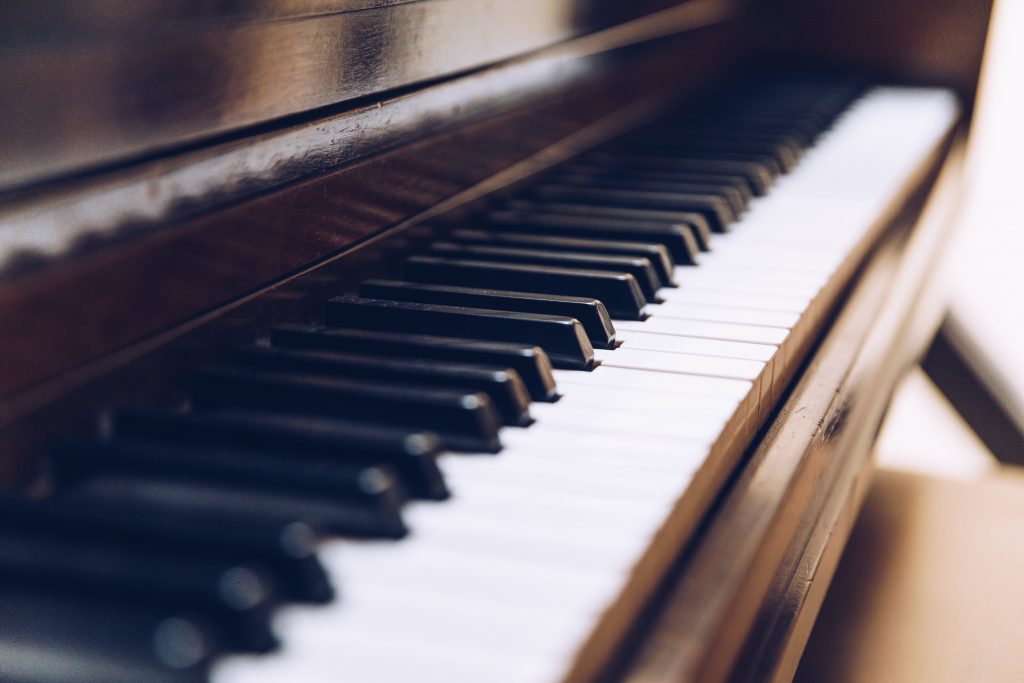The piano is an extremely interesting instrument. It can weigh up to half a tonne, is made up of more than 12,000 parts and its strings are tensioned between 15 and 30 tonnes! These are just some of the many fascinating facts about this instrument that are not always widely known. Below we have prepared 5 more interesting things about your piano that you may not yet know.

1. How many keys does a piano have?
Most acoustic upright and grand pianos have 88 keys as standard, but some older models have fewer keys, usually 85. Although it is common knowledge that some pianos have fewer than 88 keys, it is not common knowledge that some pianos have more keys. The piano manufacturer Bosendorfer produces pianos with extra keys. They have concert pianos in their range, for example, the Bosendorfer 290 Imperial and Bosendorfer 225, which have 97 and 92 keys respectively added to the bass area of the keyboard. There is also Stuart and Sons, which produces pianos with 102 and 108 keys.
2. How many pedals does a piano have?
It varies here too. Smaller pianos, such as consoles or small studio pianos, may have only two pedals. Larger upright and grand pianos usually have 3 pedals but this is not a rule either. You can find out more about this topic in our article about the differences and similarities between an upright and a grand piano.
3. How many octaves does a piano have?
A typical piano with 88 keys can play up to 7 octaves. However, if it has extra keys, it gains an extra 2 to 3 octaves! This is by far the widest range of any musical instrument. This makes the piano perhaps the most versatile instrument.
4. Do I need to tune my piano after moving?
Thinking of moving your piano? Take a look at our tips to make it a pleasant and enjoyable experience. As far as tuning your piano after the move is concerned, it is necessary, but not right away. The need for such tuning has less to do with the actual movement of the instrument, and more to do with the conditions the piano will encounter in the new place. The new place will have different temperature and humidity, airflow patterns, etc., which will affect the tuning of the instrument itself.
So when should I tune the piano after the move?
Although it’s tempting to tune a piano immediately after moving, it’s worth waiting at least a week. This will give the piano time to acclimatise and give you an idea of how much the change of location has affected its tuning.
5. Why are there black keys on a white keyboard?

There are several hypotheses to explain this choice of colours on the keyboard. One is that it was intended to help pianists play the piano. The black keys are intended to visually divide the keys so that pianists can more easily see which key they are on. The arrangement of the black keys synchronises with the octaves and makes playing the piano much easier. According to another hypothesis, the black and white keys came from the fact that pianos were built mainly of ebony and ivory, which naturally had these colours. An interesting fact is that the key colours were actually reversed. White keys used to be black, and black keys used to be white!
6. How old is my piano? Can I find the year of its manufacture on the frame?
Sometimes we find the year engraved on the piano frame. However, this is not the year of production of a particular instrument but the year of the company’s foundation. The age of a piano is always “coded” in the serial number. The smaller this number is, the older the instrument should be. Finding the serial number is usually not too difficult, you can read about the places where you can look for it in our article.
You may be interested in other themes:


